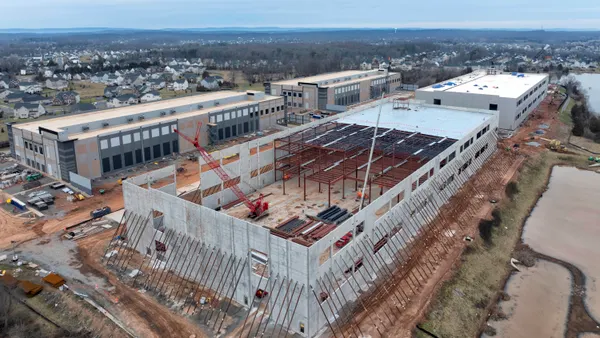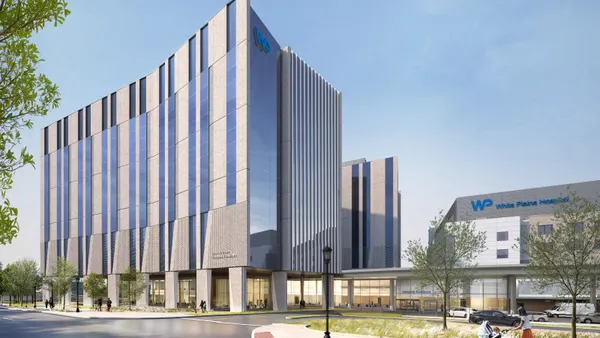As Hensel Phelps looks for better ways to improve on all things safety, the multinational contractor is piloting technology solutions like Edify, an app designed to create safety-minded culture within construction companies.
Every morning, Hensel Phelps workers log in and answer a seemingly simple question: Why do you want to be safe today?
Their answers are generally thoughtful, sometimes poignant. They post pictures of their families or mention an anniversary dinner with their spouse that night.
“They’re not just filling it out to fill it out,” said Thai Nguyen, chief innovation officer for the Greeley, Colorado, firm. “It gets them to think: What am I doing today? What is important to me? Getting that engagement and commitment moving forward goes a long way.”
While Hensel Phelps’ investment in safety technology is all about “getting that individual home safe that day,” Nguyen said, Edify does a lot more than that. The platform’s use of AI to analyze reams of data collected from the field also tracks and improves productivity.
“It’s symbiotic,” Nguyen said.
Increasing Investment
Construction is a notoriously dangerous industry, accounting for 6% of the overall workforce in the U.S., but about 20% of worker deaths, according to the Bureau of Labor Statistics. In 2020, 1,008 construction workers suffered fatal work injuries — more than any other worker segment.
While that percentage is still too high, the industry’s increased use of advanced technologies, including wearables, sensors, AI tools and extended-reality platforms, is driving improvement, experts say.
“Safety tech provides better data to make decisions and drives efficiency to achieve safer projects,” said Jerry N. Shupe, Hensel Phelps’ corporate director of safety and health.
Digital and mobile tools and software are starting to see widespread adoption, said Casey Banks, managing risk control consultant for construction at insurance company Travelers, because they not only help drive efficiency and safety on the jobsite but also easily integrate into a company’s existing risk-management programs.
Construction companies’ spending on safety technology is increasing, too, said Associated Builders and Contractors Vice President of Construction Technology and Innovation Matt Abeles, who cited a recent study showing 47% of contractors spend between $1,000 and $10,000 on it each year.
“It used to be, we’ll get it if we really need it,” Abeles said. “Now we’re seeing people put aside technology dollars specifically for safety.”
Jake Nickerson, a dispatcher for Harwich, Massachusetts-based contractor Robert B. Our Co., said investing in TennaCAM, a dash-cam device that allows the company to monitor equipment movement and driver safety, is saving him both time and headaches. Tenna is a fleet-tracking platform for everything from heavy iron to vehicles and mid-size equipment.
“The vast majority of our guys do a fantastic job of driving safely, driving within the speed limit and under our standards,” Nickerson said. “Some don’t, and we’ve been able to curb that very quickly due to the data that Tenna gives us.”
Data management
Wearables — devices that track where workers are within jobsites and monitor everything from personal health conditions to potential job site hazards — are seeing particularly widespread adoption. By 2023, the United States Chamber of Commerce predicts, almost a quarter of contractors will be using the technology.
While wearables go a long way toward keeping workers safe, the massive amount of data they’re able to collect — and analyze using machine learning and AI — is making the biggest difference in contractors’ ROI on safety tech investments.
“We’re getting better at collecting data with 360-degree cameras, LIDAR, drones, wearables and machine sensors," Nguyen said. "But the real value is how it surfaces, in a way that’s very transparent, giving everyone access and actual items that will improve on these trends.”
Florence, Italy-based safety technology company Advanced Microwave Engineering, which introduced its TAG Tracking worker-monitoring system in 2017, recently launched cloud software that obtains, processes and summarizes safety and efficiency data and uses AI to assess risk levels and determine best strategies to create safer, more efficient work zones.
In addition to providing real-time location information that allows contractors to monitor safety and efficiency across construction sites, AME analyzes the relationship between the two.
Though AME has been in business since 1999, the company has just begun to tap what’s possible, said AME technical system engineer Gabriele Fioravanti. “This is a field that runs so fast, so fast,” he said. “There is a lot of possibility.”














